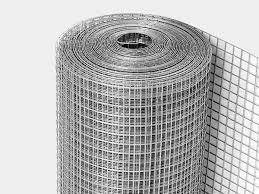nov . 26, 2024 18:51 Back to list
Understanding Hydraulic Hose Fittings for Efficient Fluid Transfer Systems
Understanding Hydraulic Hose Fittings A Comprehensive Overview
Hydraulic systems are critical to the operation of various machines across different industries, from construction to automotive and beyond. Central to these systems are hydraulic hose fittings, which play a vital role in ensuring that fluid is transmitted efficiently and safely throughout the hydraulic circuitry. This article delves into the various aspects of hydraulic hose fittings, including their types, materials, applications, and best practices for selection and maintenance.
Types of Hydraulic Hose Fittings
Hydraulic hose fittings can primarily be categorized into two types permanent and field-attachable fittings.
1. Permanent Fittings These fittings are crimped onto the hose and are designed for a permanent connection. They provide a secure, leak-free seal, making them suitable for applications where the hose assembly will not need to be changed frequently.
2. Field-Attachable Fittings Also known as reusable fittings, these can be installed and removed in the field without specialized equipment. This flexibility makes them ideal for situations where quick repairs or adjustments are needed.
In addition to these two main types, hydraulic fittings come in various shapes and sizes, including elbow, tee, and couplings, allowing for versatile configurations in the hydraulic system.
Materials and Construction
The construction of hydraulic hose fittings typically involves materials that ensure durability and resistance to corrosion, high pressure, and extreme temperatures. Common materials include
- Steel Often used for its strength and durability. Carbon steel is commonly used for general applications, while stainless steel fittings are preferred in corrosive environments.
- Aluminum Lightweight and resistant to corrosion, aluminum fittings are advantageous in applications where weight reduction is critical.
- Brass Known for its resistance to rust and corrosion, brass fittings are often used in lower-pressure applications.
The choice of material significantly influences the fitting's performance and longevity, making it essential to select the right material based on your application's specific needs.
Applications of Hydraulic Hose Fittings
Hydraulic hose fittings are found in a vast array of applications across numerous industries. Some common uses include
- Construction Equipment Hydraulic hose fittings facilitate the operation of excavators, cranes, and loaders, where reliable hydraulic systems are essential for performance
.hydraulic hose fittings

- Agricultural Machinery Tractors and harvesters employ hydraulic fittings to control various functions, such as lifting and plowing.
- Automotive and Aerospace In vehicles and aircraft, hydraulic systems are used for brakes, steering, and landing gear mechanisms, requiring reliable fittings for safety and functionality.
- Manufacturing and Robotics Hydraulic systems drive many industrial machines, relying on durable fittings to ensure uninterrupted operation.
Selecting the Right Hydraulic Hose Fittings
Choosing the appropriate hydraulic fittings is crucial for the integrity of the system. Consider the following factors
- Pressure Rating Ensure that the fittings can handle the maximum pressure exerted in the hydraulic circuit.
- Compatibility The fittings must be compatible with the hose type and material to avoid leaks and failures.
- Temperature Assess the temperature range in which the fittings will operate. High temperatures can require special materials or designs.
- Size Correct sizing is essential to prevent flow restrictions or ruptures.
Maintenance Tips
To ensure the longevity and reliability of hydraulic hose fittings, regular maintenance is crucial. Here are a few tips
- Inspect Regularly Check for signs of wear, corrosion, or damage. Early detection can prevent more significant issues down the line.
- Ensure Proper Installation Follow manufacturer guidelines to ensure that fittings are installed correctly to avoid leaks.
- Replace When Necessary Don't hesitate to replace fittings that show signs of wear or degradation.
Conclusion
Hydraulic hose fittings are indispensable components in hydraulic systems, serving as the backbone for fluid transfer in various applications. Understanding the types, materials, applications, and maintenance of these fittings is essential for anyone working with hydraulic systems. By focusing on the selection and care of hydraulic hose fittings, users can enhance their system’s efficiency and reliability, ultimately contributing to safer and more productive operations across many industries.
-
Weather Resistance Properties of Quality Roofing Nails
NewsAug.01,2025
-
How Galvanised Iron Mesh Resists Corrosion in Harsh Environments
NewsAug.01,2025
-
Creative Landscaping Uses for PVC Coated Wire Mesh Panels
NewsAug.01,2025
-
Common Wire Nail Dimensions and Their Specific Applications
NewsAug.01,2025
-
Choosing the Right Welded Wire Sheets for Agricultural Fencing
NewsAug.01,2025
-
Anti - Climbing Features of Razor Wire Barriers
NewsAug.01,2025









